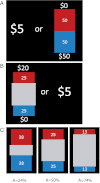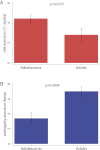Adolescents' risk-taking behavior is driven by tolerance to ambiguity
- PMID: 23027965
- PMCID: PMC3479478
- DOI: 10.1073/pnas.1207144109
Adolescents' risk-taking behavior is driven by tolerance to ambiguity
Abstract
Adolescents engage in a wide range of risky behaviors that their older peers shun, and at an enormous cost. Despite being older, stronger, and healthier than children, adolescents face twice the risk of mortality and morbidity faced by their younger peers. Are adolescents really risk-seekers or does some richer underlying preference drive their love of the uncertain? To answer that question, we used standard experimental economic methods to assess the attitudes of 65 individuals ranging in age from 12 to 50 toward risk and ambiguity. Perhaps surprisingly, we found that adolescents were, if anything, more averse to clearly stated risks than their older peers. What distinguished adolescents was their willingness to accept ambiguous conditions--situations in which the likelihood of winning and losing is unknown. Though adults find ambiguous monetary lotteries undesirable, adolescents find them tolerable. This finding suggests that the higher level of risk-taking observed among adolescents may reflect a higher tolerance for the unknown. Biologically, such a tolerance may make sense, because it would allow young organisms to take better advantage of learning opportunities; it also suggests that policies that seek to inform adolescents of the risks, costs, and benefits of unexperienced dangerous behaviors may be effective and, when appropriate, could be used to complement policies that limit their experiences.
Conflict of interest statement
The authors declare no conflict of interest.
Figures




References
-
- Arnett J. Reckless behavior in adolescence: A developmental perspective. Dev Rev. 1992;12:339–373.
-
- Gullone E, Moore S, Moss S, Boyd C. The Adolescent Risk-Taking Questionnaire: Development and psychometric evaluation. J Adolesc Res. 2000;15:231–250.
-
- Spear LP. The Behavioral Neuroscience of Adolescence. New York: Norton; 2010.
-
- Gittes EB, Irwin CE., Jr Sexually transmitted diseases in adolescents. Pediatr Rev. 1993;14:180–189. - PubMed
-
- Arnett JJ. Sensation seeking, aggressiveness, and adolescent reckless behavior. Pers Individ Dif. 1996;20:693–702.
Publication types
MeSH terms
Grants and funding
LinkOut - more resources
Full Text Sources

